#lactuca sativa
Photo

#smoke weed#smokeweed#marijuana strains#kush#getliftedkw%#hemp benefits#lactuca sativa#weedstagram420
44 notes
·
View notes
Photo

4 notes
·
View notes
Link
1 note
·
View note
Text
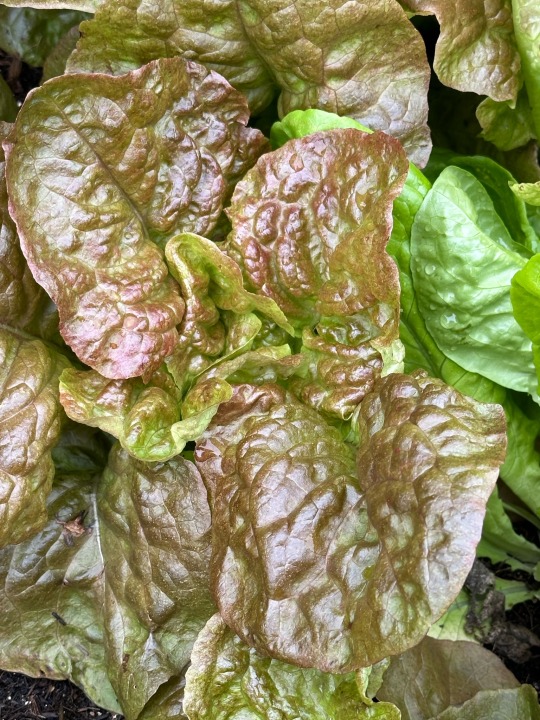


Plant of the Day
Friday 29 September 2023
The lettuce (Lactuca sativa) crop looked good in the help yourself community containers on the high street in Thurso, Scotland. When this annual leaf vegetable is ready to harvest they will put a heart label by the plants.
Jill Raggett
46 notes
·
View notes
Text
Test test test
Lettuce (Lactuca sativa) is an annual plant of the family Asteraceae. It is most often grown as a leaf vegetable, but sometimes for its stem and seeds. Lettuce is most often used for salads, although it is also seen in other kinds of food, such as soups, sandwiches and wraps; it can also be grilled.[3] One variety, celtuce (asparagus lettuce), is grown for its stems, which are eaten either raw or cooked. In addition to its main use as a leafy green, it has also gathered religious and medicinal significance over centuries of human consumption. Europe and North America originally dominated the market for lettuce, but by the late 20th century the consumption of lettuce had spread throughout the world. As of 2021, world production of lettuce and chicory was 27 million tonnes, 53 percent of which came from China.[4]
Who the fuck puts lettuce in soup?
20 notes
·
View notes
Text
Sextidi 16 Germinal an CCXXXII
(Jeudi 4 avril 2024 / Thursday, April 4th, 2024)
🇨🇵 Texte en français et en anglais / Text in French and English 🇬🇧/🇺🇲

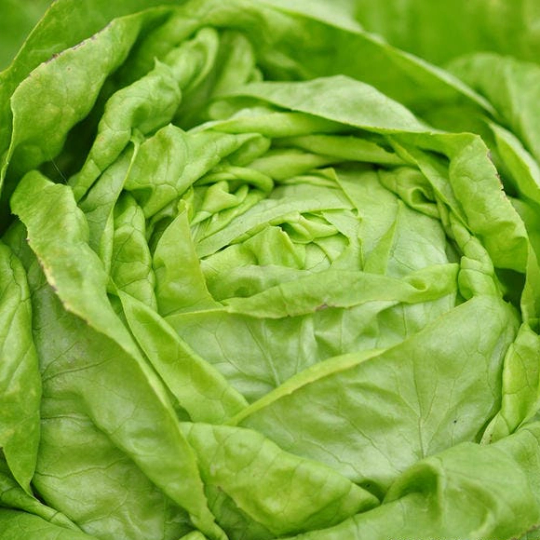
Le calendrier républicain, adopté pendant la Révolution française, était une tentative de rompre avec le passé monarchique et catholique en instaurant un système de mesure du temps basé sur les valeurs républicaines et agricoles. Chaque jour du calendrier républicain était dédié à une plante, un animal, un outil ou un événement symbolique, reflétant ainsi les idéaux de la Révolution.
Le mois de Germinal dans le calendrier républicain français représente le renouveau et la vitalité de la nature au printemps. Du 20 mars au 19 avril, Germinal est le mois où la terre se réveille de son sommeil hivernal, où les bourgeons éclosent et où les premières fleurs colorent les paysages. Il incarne le début de la saison des semailles et le travail de la terre, symbolisant ainsi l'espoir et la promesse d'une nouvelle récolte. Germinal rappelle également les idéaux républicains de liberté, d'égalité et de fraternité, en invitant chacun à contribuer à l'essor de la société et à cultiver un avenir meilleur.
Aujourd'hui, dans le calendrier républicain français, nous célébrons la journée de la Laitue. Ce jour est dédié à mettre en lumière l'importance de la laitue, une plante à feuilles vertes largement cultivée et appréciée pour ses qualités nutritionnelles et gustatives.
La laitue (Lactuca sativa) est une plante herbacée de la famille des Astéracées. Reconnaissable par ses feuilles vertes, croquantes et juteuses, la laitue est un ingrédient essentiel dans de nombreuses cuisines à travers le monde. Cultivée depuis l'Antiquité, elle est appréciée pour sa fraîcheur et sa polyvalence culinaire.
La laitue est non seulement délicieuse, mais elle est également riche en nutriments essentiels. Elle est une excellente source de vitamines et de minéraux, tels que la vitamine K, la vitamine A, le folate et le potassium. De plus, elle est faible en calories et riche en fibres, ce qui en fait un aliment idéal pour soutenir une alimentation saine et équilibrée.
En cette journée spéciale de la Laitue, nous sommes invités à célébrer ce légume frais et nutritif. C'est également une occasion parfaite pour en apprendre davantage sur les différentes variétés de laitue, leurs méthodes de culture et leurs bienfaits pour la santé.
En conclusion, la journée de la Laitue le 16 Germinal est une occasion idéale pour apprécier ce légume délicieux et nourrissant. Profitez de cette journée pour explorer les merveilles de la laitue et pour partager vos découvertes avec vos proches.
***
The Republican calendar, adopted during the French Revolution, was an attempt to break away from the monarchic and Catholic past by establishing a system of time measurement based on republican and agricultural values. Each day of the Republican calendar was dedicated to a plant, an animal, a tool, or a symbolic event, thus reflecting the ideals of the Revolution.
The month of Germinal in the French Republican calendar represents the renewal and vitality of nature in spring. From March 20 to April 19, Germinal is the month when the earth awakens from its winter slumber, when buds burst open, and the first flowers color the landscapes. It embodies the beginning of the sowing season and the work of the land, symbolizing hope and the promise of a new harvest. Germinal also recalls the republican ideals of liberty, equality, and fraternity, inviting everyone to contribute to the advancement of society and cultivate a better future.
Today, in the French republican calendar, we celebrate Lettuce Day, marked on 16 Germinal. This day is dedicated to highlighting the importance of lettuce, a green leafy plant widely cultivated and appreciated for its nutritional and gustatory qualities.
Lettuce (Lactuca sativa) is a herbaceous plant of the Asteraceae family. Recognizable by its green, crunchy, and juicy leaves, lettuce is an essential ingredient in many cuisines around the world. Cultivated since antiquity, it is appreciated for its freshness and culinary versatility.
Lettuce is not only delicious but also rich in essential nutrients. It is an excellent source of vitamins and minerals, such as vitamin K, vitamin A, folate, and potassium. Furthermore, it is low in calories and rich in fiber, making it an ideal food to support a healthy and balanced diet.
On this special Lettuce Day, we are invited to celebrate this fresh and nutritious vegetable. It is also a perfect opportunity to learn more about the different varieties of lettuce, their cultivation methods, and their health benefits.
In conclusion, Lettuce Day on 16 Germinal is an ideal opportunity to appreciate this delicious and nourishing vegetable. Enjoy this day to explore the wonders of lettuce and share your discoveries with your loved ones.
#calendrier#calendrier républicain#calendrier républicain français#calendrier révolutionnaire#calendrier révolutionnaire français#france#français#révolution#french revolution#french#révolution française#francais#french calendar#laitue#lettuce#agriculture#nature#germinal
2 notes
·
View notes
Note
Lettuce (Lactuca sativa) is an annual plant of the daisy family, Asteraceae. It is most often grown as a leaf vegetable, but sometimes for its stem and seeds. Lettuce is most often used for salads, although it is also seen in other kinds of food, such as soups, sandwiches and wraps; it can also be grilled.[3] One variety, the celtuce (asparagus lettuce), is grown for its stems, which are eaten either raw or cooked. In addition to its main use as a leafy green, it has also gathered religious and
You just copy and pasted the wiki page for lettuce and sent an ask with that?
13 notes
·
View notes
Photo
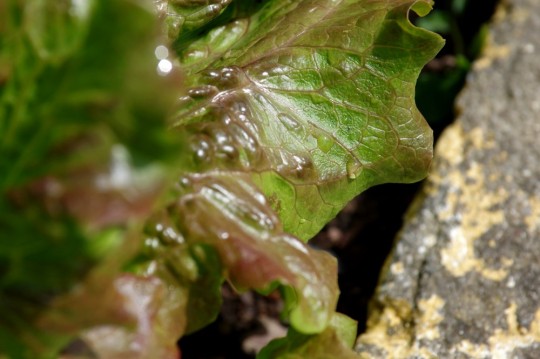
Lettuce Leaf, 2021
@ Vale de Lamas, Coimbra, Portugal
Lettuce (Lactuca sativa) is an annual plant of the daisy family, Asteraceae. Often used for our yummy salads, it has also gathered religious and medicinal significance over centuries of human consumption.
Lettuce was originally farmed by the ancient Egyptians, who transformed it from a plant whose seeds were used to obtain oil into an important food crop raised for its succulent leaves and oil-rich seeds. Lettuce spread to the Greeks and Romans; the latter gave it the name lactuca, from which the English lettuce is derived. By 50 AD, many types were described, and it appeared often in medieval writings, including several herbals. The XVI to XVIII centuries saw the development of many varieties in Europe, and by the mid XVIII century, cultivars were described that can still be found in gardens.
Lettuce is a rich source of vitamin K and vitamin A, and a moderate source of folate and iron.
Have you ever tried Lettuce soup? If not, you should! It’s delicious! ^^
in Portugal, the people that are originally born in the center of Lisbon are called Alfacinhas, which litterally means Little Lettuces xD
A story for another photo :P
*Let FOOD be your MEDICINE*
#letuce#waterdrops#colours#greenhouse#terra#veins#purple#green#sunny#leaves#deep#farming#portugal#coimbra#earth#details#plants#plantworld#naturetextures#nature lover#original photography#originalphotographers#eathealthy#feel better#organic#produce#gardening#traditional#yummyfood#medicineisyourfood
7 notes
·
View notes
Link
1 note
·
View note
Text
Lenyűgöző szépségek a világból. Saláták és egyéb salátanövények - Lollo bionda saláta
Hüvelyes különlegességek az Egzotikus Növények Stúdiójától Kínálatunkban rengeteg kül��nleges zöldség magot (paradicsom, paprika, tök, uborka, bab, dinnye), virág költeményeket talál. - Lollo bionda saláta - Lactuca sativa https://www.egzotikusnovenyek.hu/hu/salatak-es-egyeb-salatanovenyek/lollo-bionda-salata-detail #egzotikus, #különleges, #növények, #mag, #vetőmag, #saláta
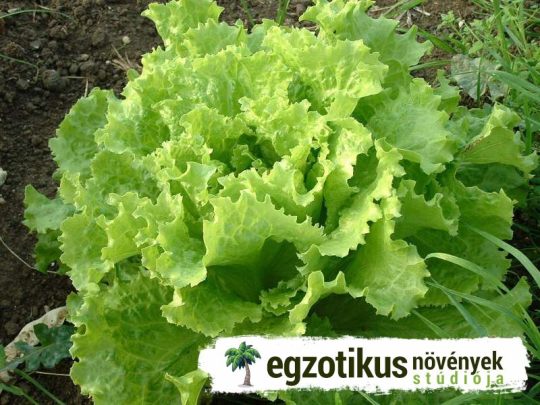
0 notes
Text
Going through the Crisp and Stimulating World of Iceberg Lettuce
Iceberg lettuce, along with its crunchy structure and mild flavour, often finds alone at the centre of debates among salad enthusiasts. Some praise its stimulating crunch and versatility, while others dismiss it as short of nutritionary value compared to its darker abundant green counterparts. Within this comprehensive manual, we'll dive deep into the regarding iceberg lettuce, checking out its history, nutritionary profile, culinary makes use of, and why this deserves a spot on your own plate.
The Origin Story:
Iceberg lettuce, scientifically recognized as Lactuca sativa var. capitata, finds its roots back to ancient Egypt, where it was harvested over the Nile Lake. However , its increase to popularity in the United Claims didn't occur right up until the early 20 th century. California's moderate climate and fertile soil provided typically the perfect conditions with regard to growing this sharp and compact member of the lettuce family variety.
The Sharp and Crunchy Structure:
Among the defining characteristics of iceberg lettuce is its crispy and crunchy consistency. Its tightly jam-packed leaves offer some sort of satisfying bite, generating it a favourite choice for salads, sandwiches, and gloves. The leaves are also recognized for their capacity to hold up well to dressings and toppings, making sure that every mouthful is stuffed with flavor and texture.
Nutritional Profile:
While banquise lettuce might not boast the same variety of vitamins and nutrients as its more dark leafy green counterparts like spinach or perhaps kale, it continue to offers some nutritionary benefits. It's reduced calories, making that a fantastic choice regarding those trying to sustain or lose weight. Furthermore, iceberg lettuce contains small amounts associated with vitamins A plus K, as properly as folate and even potassium. Whilst it might not be the most nutrient-dense alternative, it can continue to contribute to the healthy diet whenever combined with various other nutritious foods.
Culinary Versatility:
Despite its reputation as some sort of simple salad base, iceberg lettuce offers much more cooking versatility than satisfies the eye. The crisp texture tends to make it well suited for incorporating crunch to casse-cro?te, tacos, and wraps. Shredded iceberg lettuce can also be used being a per year for burgers or tacos, adding the refreshing contrast in order to richer ingredients. Additionally, it can become grilled or roasted to bring out their natural sweetness and even add depth associated with flavor to food.
Tips for Selecting and Storing:
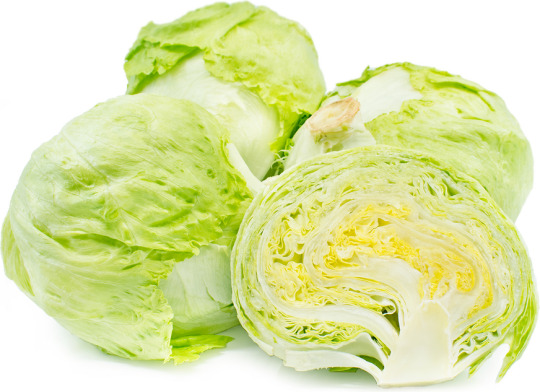
Any time selecting iceberg member of the lettuce family, look for minds which are firm plus heavy for their very own size, with clean, tightly packed simply leaves. Avoid heads of which show indications of wilting or browning, while this indicates how the lettuce is past its prime. Once you have brought your banquise lettuce home, store it unwashed inside the crisper drawer of your respective refrigerator. It's finest to put it to use in a few days to assure optimal freshness and flavor.
Health Considerations:
While banquise lettuce is usually safe for intake, it's important to exercise proper food protection measures to reduce the risk of foodborne disease. Wash your hands thoroughly before coping with lettuce, and stay positive to rinse this under cold drinking water before use. In addition , be cautious if consuming pre-cut or even packaged lettuce, as it may be a little more prone to toxic contamination. In case you have any issues concerning the safety involving your lettuce, it's best to make a mistake on the side of caution and discard it.
In Defense regarding Iceberg Lettuce :
Regardless of its critics, banquise lettuce has acquired its rightful spot in the culinary world. Its clean texture, mild flavor, and versatility help make it a beneficial ingredient in a new wide range associated with dishes. While it may not group the same dietary punch as additional leafy greens, it can still add to a balanced diet when loved included in a different and diverse meals plan. So next time you're discussing whether to achieve regarding the iceberg member of the lettuce family or opt intended for something darker and even leafier, remember of which there's room in your plate for both.
Iceberg member of the lettuce family may have it is detractors, but its crisp texture, mild flavor, and culinary arts versatility make it an useful ingredient in any kitchen. Whether enjoyed as a simple greens base or accustomed to add crunch in order to sandwiches and wraps, iceberg lettuce offers earned its place on the menu. Thus next time most likely searching for greens, may forget the humble banquise lettuce—it just may possibly surprise you with its delicious potential.
0 notes
Text
Lettuce
Lettuce prefers spring and autumn weather.
Warm season vegetables are replacing cool season vegetables about now. Technically, lettuce, Lactuca sativa, is a cool season vegetable. It grows through spring and autumn though. The last of it can continue almost until May. Within the mildest coastal climates, it can continue later. By the time it finishes there, it is almost time to plant more for…
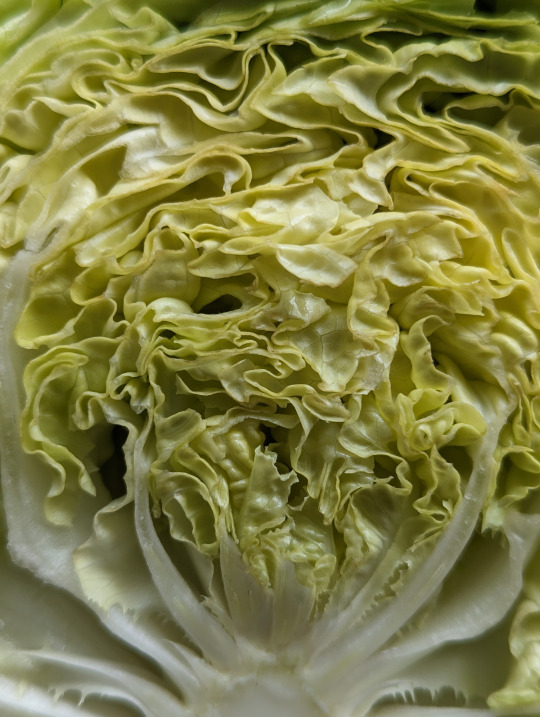
View On WordPress
0 notes
Text
Plural of Lettuce: Correct Usage in English

The word "lettuce" is a staple in discussions about salads, healthy eating, and gardening. It's a word that seems straightforward, yet its plural form can stir up a bit of confusion. This article delves into the pluralization of "lettuce," exploring its usage, common errors, and answering frequently asked questions. By understanding the singular and plural forms of this common word, language learners and enthusiasts can enhance their linguistic skills and avoid common pitfalls.
The Singular and Plural of Lettuce
SingularPlurallettucelettuces
The singular form of the word is "lettuce," referring to a single type or head of this leafy green vegetable. When referring to multiple types or heads, the plural form "lettuces" is used. It's important to note that in everyday usage, the word "lettuce" often serves as both a singular and a plural noun, particularly when discussing it in a general sense or as a substance (e.g., "I bought lettuce for the salad").
Understanding Lettuce
Definition of Lettuce
Lettuce (Lactuca sativa) is a leafy green vegetable known for its use in salads and sandwiches. It's a member of the Asteraceae family and is valued for its rich nutritional content and versatility in culinary applications.
Usage of Lettuce
The usage of "lettuce" depends largely on the context. In a botanical or agricultural context, "lettuces" refers to different types or varieties of the plant. In a culinary context, "lettuce" is often used in both singular and plural senses, usually not distinguishing between one or multiple heads of lettuce.
Use of Lettuce in Sentences
- Singular Usage: "I need to buy a head of lettuce for tonight's dinner."
- Plural Specific: "Different lettuces have distinct flavors; romaine is crisp, while butterhead is tender."
- Plural General: "This garden has a variety of lettuces, including iceberg and oak leaf.
- Non-Count Usage: "Lettuce is an essential ingredient in many salads."
- Adjective Form: "The lettuce leaves were fresh and crunchy."
Common Mistakes and Confusions
- Misusing Plural: Using "lettuces" when referring to a single type or head of lettuce is a common mistake. Remember, "lettuces" is appropriate when discussing different varieties or multiple heads.
- Overgeneralization: Assuming that "lettuce" only refers to one kind can lead to confusion, especially in a gardening or botanical context where specificity is key.
- Non-Count Misunderstanding: In contexts where lettuce is treated as a material or substance (like in recipes), it’s common to use “lettuce” for both singular and plural references.
Commonly Asked Questions
- Q: Can "lettuce" be used for both singular and plural?
- A: Yes, "lettuce" can function as a non-count noun, suitable for both singular and plural references in certain contexts, particularly in cooking or general discussions.
- Q: Is "lettuce" used differently in different English dialects?
- A: Usage can vary slightly by dialect, but the general rules of pluralization remain consistent across different forms of English.
- Q: Does the plural form change when referring to different species?
- A: Yes, "lettuces" is appropriate when referring to multiple species or varieties of lettuce.
Conclusion
Understanding the plural form of "lettuce" enhances clarity in both spoken and written English. Whether discussing various types of lettuce in a garden or preparing a shopping list, knowing when to use "lettuce" or "lettuces" is crucial. This exploration not only clarifies a common linguistic query but also enriches our appreciation of language's nuances. Remember, language is a living entity, continuously evolving with our everyday experiences.
FAQ
What is the plural form of lettuce?
The plural form of the word "lettuce" is "lettuces." This refers to multiple plants or varieties of lettuce. For example, you would say "I bought three lettuces at the grocery store."
Is "lettuce" an uncountable noun?
Yes, "lettuce" is an uncountable noun, meaning it does not typically require a plural form, as it is already plural in nature. However, when referring to distinct individual items or varieties of lettuce, the plural form "lettuces" is used.
What are the different types of lettuce?
Lettuce comes in various types and varieties, including iceberg, romaine, leaf, and butterhead lettuce. Each type has its own unique characteristics and uses in culinary applications.
Where does the word "lettuce" come from?
The word "lettuce" originates from the Old French "laitue," which is the plural form of "lait" meaning milk. This is believed to be because of the milky juice present in lettuce leaves. The Old French term can be traced back to the Latin word "lactuca," which also means lettuce.
How can lettuce be used in cooking?
Lettuce is widely used in culinary applications, particularly in salads. It serves as a base for various salad combinations and can be mixed with other vegetables, fruits, proteins, and dressings. Lettuce leaves can also be used in sandwiches, wraps, and burgers as a fresh and crispy element. Additionally, lettuce can be sautéed or added to soups and stir-fries for a cooked application.
Can lettuce be grown at home?
Yes, lettuce is a popular choice for home gardening. It can be grown in both indoor and outdoor settings and requires moderate sunlight and regular watering. Lettuce is known for its fast growth and can be harvested when the leaves reach the desired size.
Read the full article
0 notes
Text
サニーレタス リーフレタス の特徴と育て方 tanex-0418
● リーフレタス サニーレタスの品種の特徴
「サニーレタス」は、赤味がかった葉を持つリーフレタスの日本における総称です。当初日本では赤いレタスは人気がありませんでしたが、西洋文化が浸透するにつれて一般的なレタスとなりました。レタスでありながら分類は緑黄色野菜に分けられます。
「リーフレタス」は葉が結球せず葉が開いて成長するタイプのレタスです。緑色が濃く刃先が広がっていてボリュームがあり、柔らかく食べやすいのが特徴です。
学名
Lactuca sativa キク科 アキノノゲシ属
別名
アカチリメンチシャ(赤縮緬萵苣)、レッドレタス
最終樹高
地植え:m 鉢植え:m (一年草)
栽培用途
地植え、鉢植え、畑、家庭菜園、プランター栽培 など
植栽適地
日本全国
育てやすさ
★★★☆☆…

View On WordPress
0 notes
Text
Would any of you guys be interested in updates on the Lactuca sativa I'm growing? I've asked my professor if I can keep some specimens from the light germination lab I'm currently doing.
0 notes